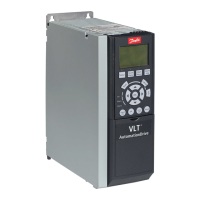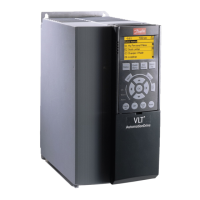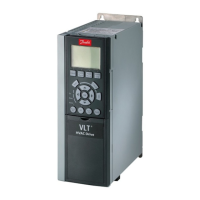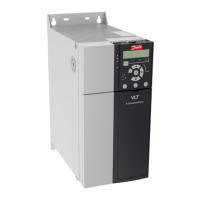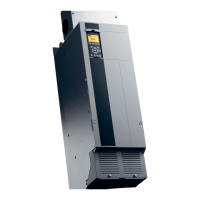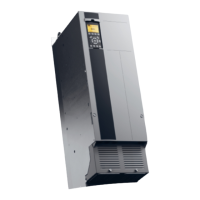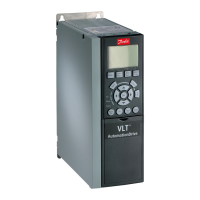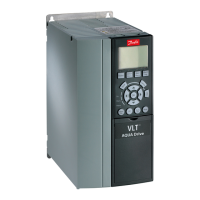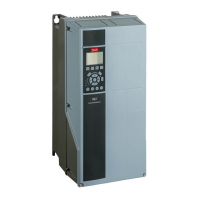What does 'DC link voltage high' mean for Danfoss DC Drives?
- AAnn HarrisonSep 23, 2025
The message 'DC link voltage high' for Danfoss DC Drives means that the intermediate circuit voltage (DC) is higher than the high voltage warning limit.
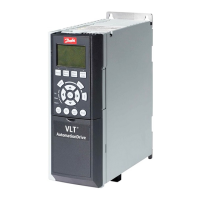








What does 'DC link voltage high' mean for Danfoss DC Drives?
The message 'DC link voltage high' for Danfoss DC Drives means that the intermediate circuit voltage (DC) is higher than the high voltage warning limit.
How to troubleshoot a dark display or no function on Danfoss DC Drives?
If the display is dark or there is no function on your Danfoss DC drive, first, check the input power source. Also, inspect fuses or the circuit breaker and follow the recommendations provided. If the LCP has no power, replace the faulty LCP or connection cable. Ensure there isn't a shortcut on the control voltage or at the control terminals, and wire the terminals properly. Use only LCP 101 or LCP 102. Adjust the contrast by pressing [Status] + [?]/[?]. If the display is still defective, replace the LCP or connection cable. For internal voltage supply faults or defective SMPS, contact the supplier.
Why Danfoss VLT AutomationDrive FC 302 power on with red light?
If your Danfoss DC Drives show 'Power On' and the indicator is red, this typically indicates an IP Address Conflict. Resolve the IP conflict.
What to do if Danfoss VLT AutomationDrive FC 302 DC Drives show External error DI2?
If your Danfoss DC drive displays 'External error DI2', this could be caused by a safety input connected to DI2 having an illegal signal level, or the sensor may be broken. To fix this, check that the configuration of DI2 (parameter 42-21 Type, subindex [0]) is set correctly and that the connected sensor is installed according to specification. You might also need to extend the discrepancy time for DI2 using the VLT® Motion Control Tool MCT 10 Safe Plug-in.
What to do if Danfoss VLT AutomationDrive FC 302 show an earth fault?
If your Danfoss DC Drives indicates an earth fault, it means there's current leaking from the output phases to ground, either in the cable between the frequency converter and the motor, or within the motor itself. The solution is to remove power to the frequency converter and repair the earth fault.
What to do for a brake chopper fault in Danfoss DC Drives?
If your Danfoss DC Drives reports a brake chopper fault, and a short circuit occurs, the brake function is disabled. Remove power to the frequency converter and remove the brake resistor.
How to fix brake resistor short circuit in Danfoss VLT AutomationDrive FC 302 DC Drives?
If your Danfoss DC Drives are reporting a brake resistor short circuit, the brake resistor is being monitored during operation. Remove the power to the frequency converter and replace the brake resistor.
How to troubleshoot motor thermistor overtemp in Danfoss VLT AutomationDrive FC 302?
If you are getting a motor thermistor overtemp warning on your Danfoss DC Drives, check whether the thermistor is disconnected. Also, check for motor overheating and if the motor is mechanically overloaded. When using terminal 53 or 54, ensure the thermistor is correctly connected between either terminal 53 or 54 (analog voltage input) and terminal 50 (+10 V supply), and that the terminal switch for 53 or 54 is set for voltage. If using terminal 18, 19, 31, 32, or 33 (digital inputs), ensure the thermistor is correctly connected between the digital input terminal used (digital input PNP only) and terminal 50.
What causes 10 Volts low error in Danfoss DC Drives?
A '10 Volts low' error in Danfoss DC Drives can be caused by a short in a connected potentiometer or improper wiring of the potentiometer. Remove the wiring from terminal 50. If the warning clears, the problem is with the customer wiring. If the warning does not clear, replace the control card.
What to do if Danfoss DC Drives show an over current error?
If you are experiencing an over current error with your Danfoss DC Drives, it might be due to shock loading or quick acceleration with high-inertia loads. First, remove the power and check if the motor shaft can be turned. Also, verify that the motor size matches the frequency converter and that the motor data is correctly set in parameters 1-20 to 1-25.
| Category | DC Drives |
|---|---|
| Control Method | Flux Vector Control |
| Communication Options | CANopen, PROFIBUS |
| Cooling | Forced convection |
| Enclosure | IP20, IP21, IP55, IP66 |
| Protection Class/Rating | IP20 |
| Protection Features | Overvoltage, Undervoltage, Overcurrent, Overtemperature, Short Circuit |
| Approvals | CE, UL, cUL |
| Ambient Temperature | -10°C to +50°C |
| Storage Temperature | -40°C to +70°C |
| Relative Humidity | 5% to 95% (non-condensing) |
| Output Voltage | 0 V to Input Voltage |
Defines the skills and experience required for personnel to ensure safe operation.
Details crucial safety measures for installation, operation, and maintenance to prevent injury.
General safety warnings related to electrical installation, heat, wire types, and induced voltage.
Instructions for ensuring electromagnetic compatibility during electrical installation.
Details the wiring within the control compartment, including safety precautions and terminal connections.
Steps before applying power, including pre-start checks and critical safety warnings.
Overview of drive parameters, navigation through menus, and programming examples.
Procedures for testing motor rotation and encoder feedback before system start-up.
Step-by-step guide for the initial start-up of the drive after application setup is completed.
Lists and explains various warnings and alarms with their causes and troubleshooting steps.
Provides a table of symptoms, possible causes, tests, and solutions for common operational issues.
Detailed electrical specifications including output current, voltage, and cable sizes.
